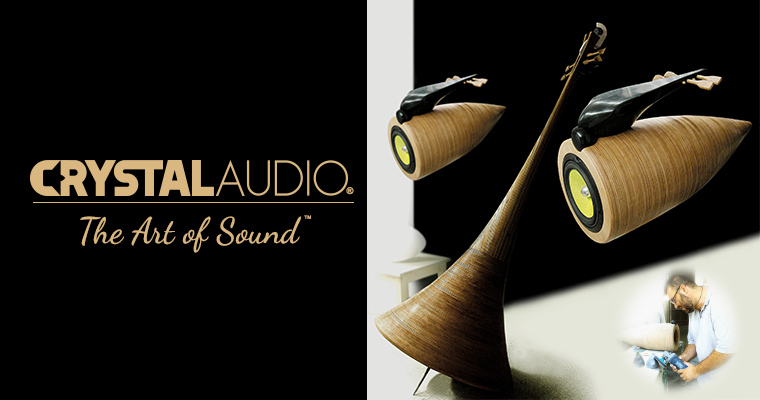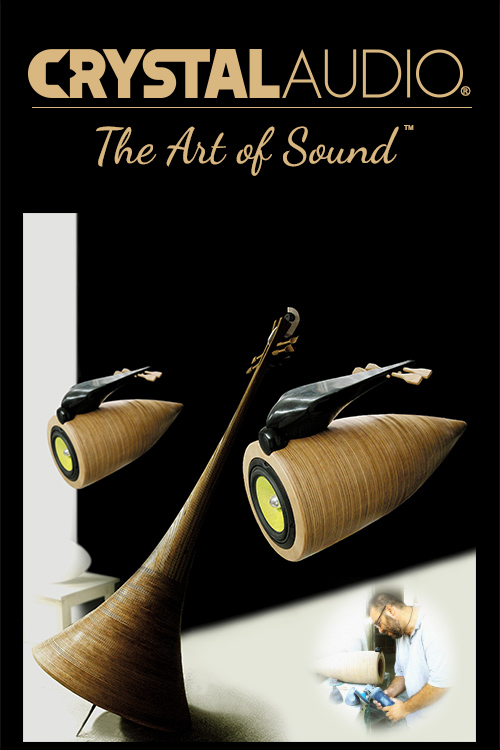Crystal Audio
Awarded productsExcellent value for money
0item(s)
You have no items in your shopping cart.
Glossary




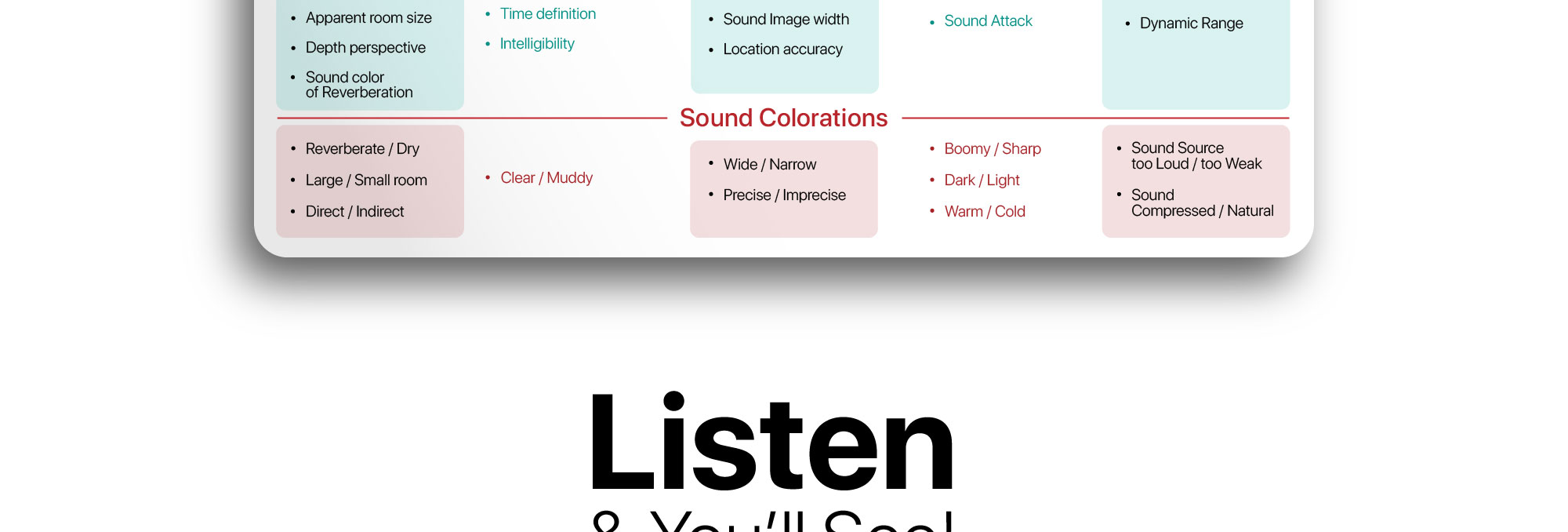



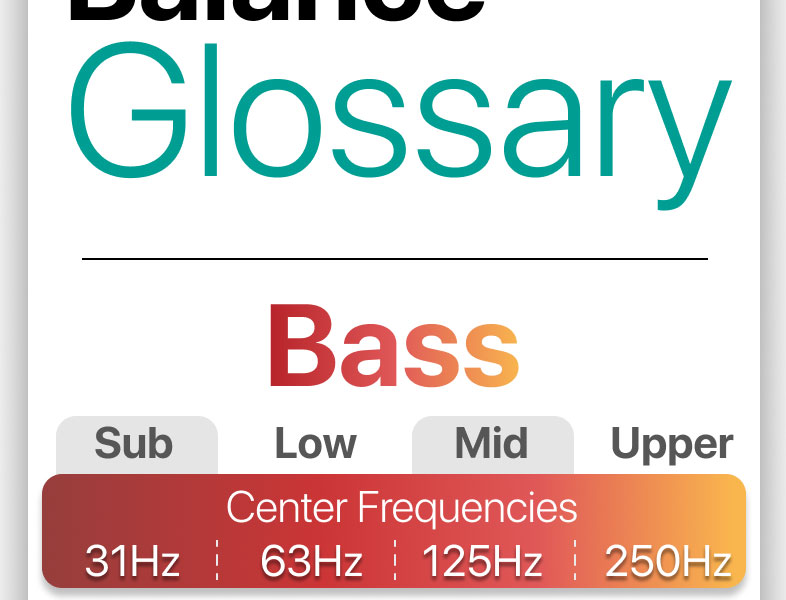
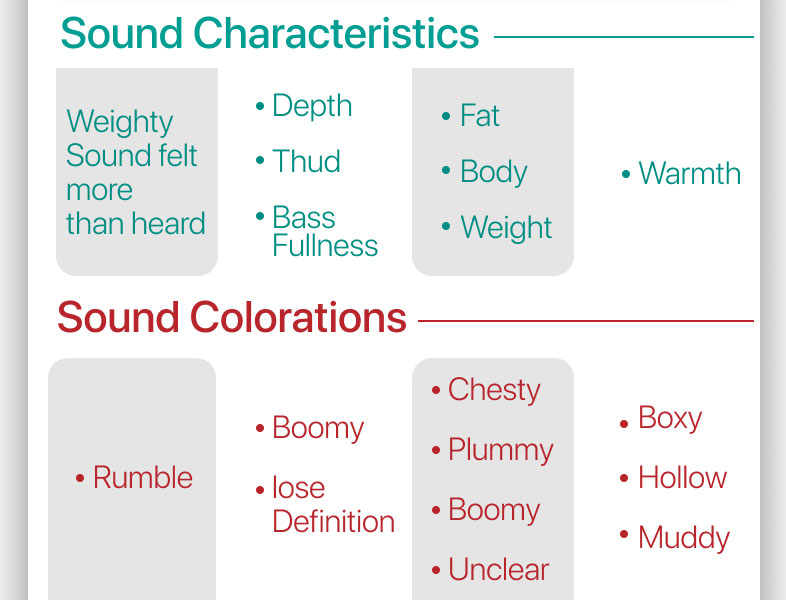

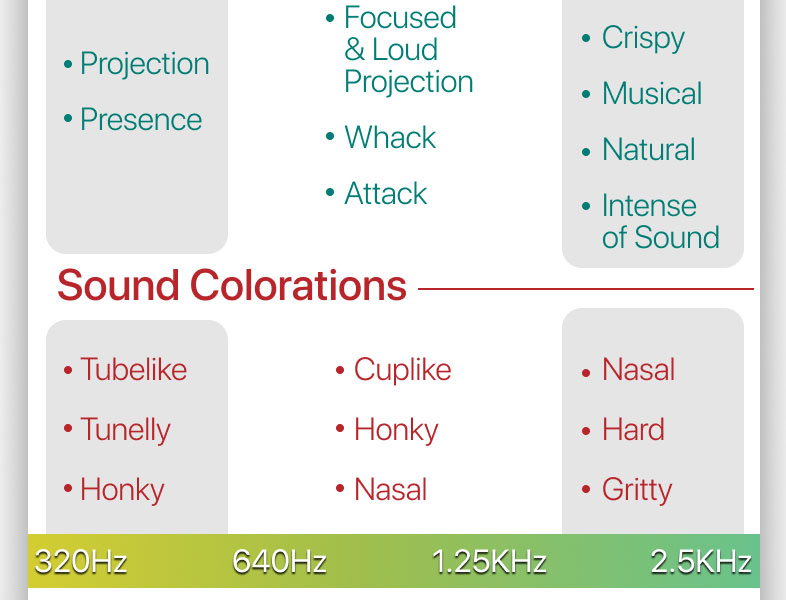
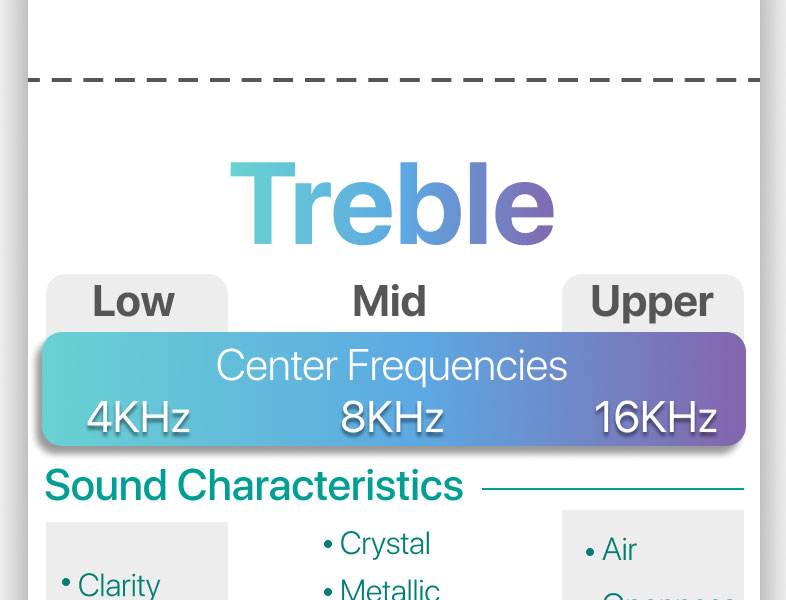


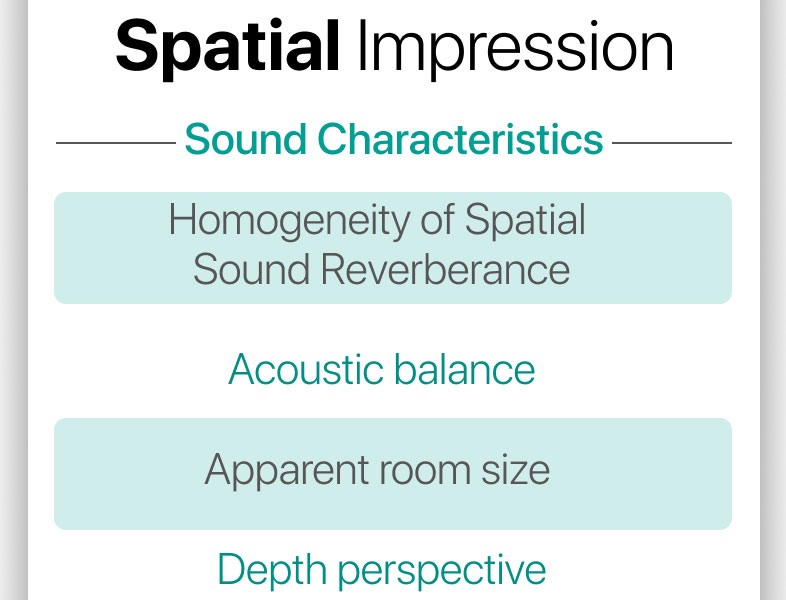

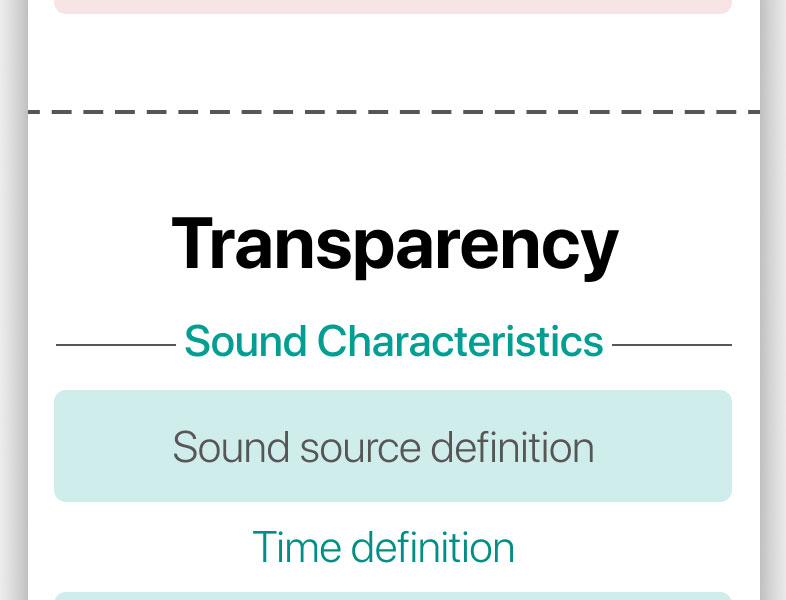
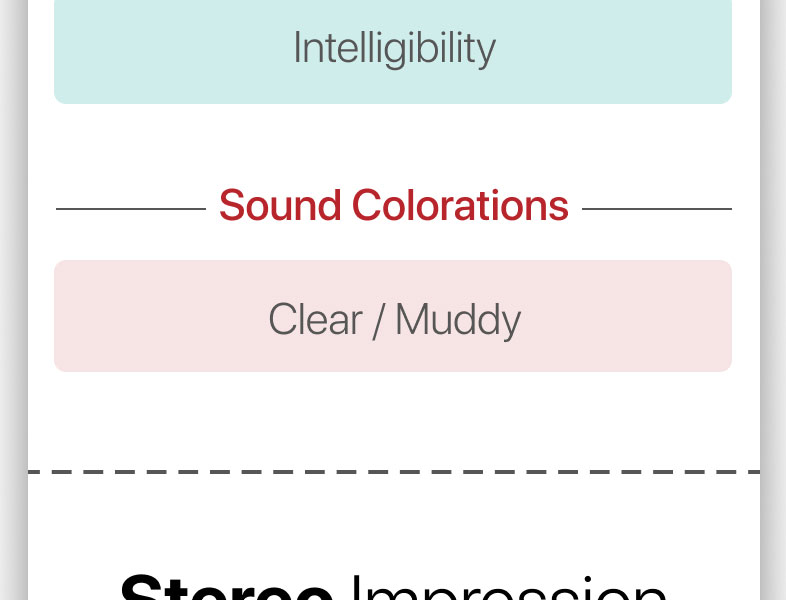

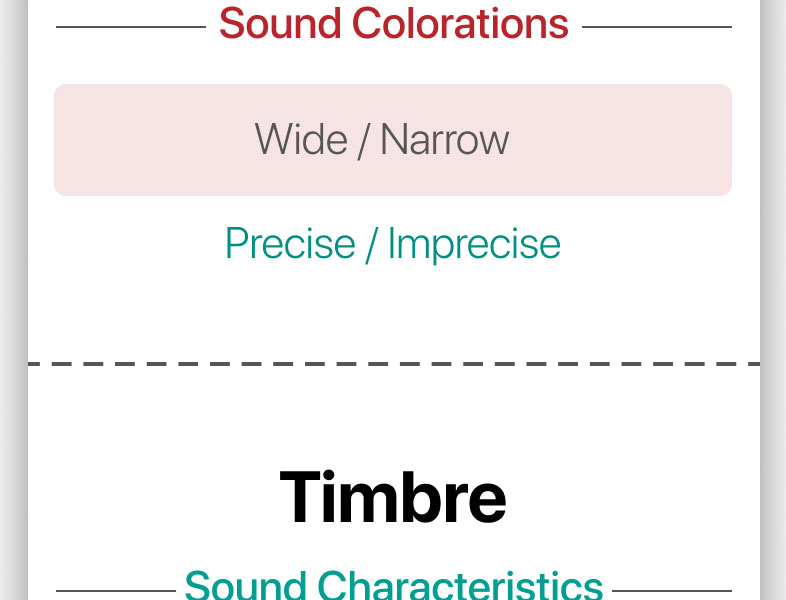
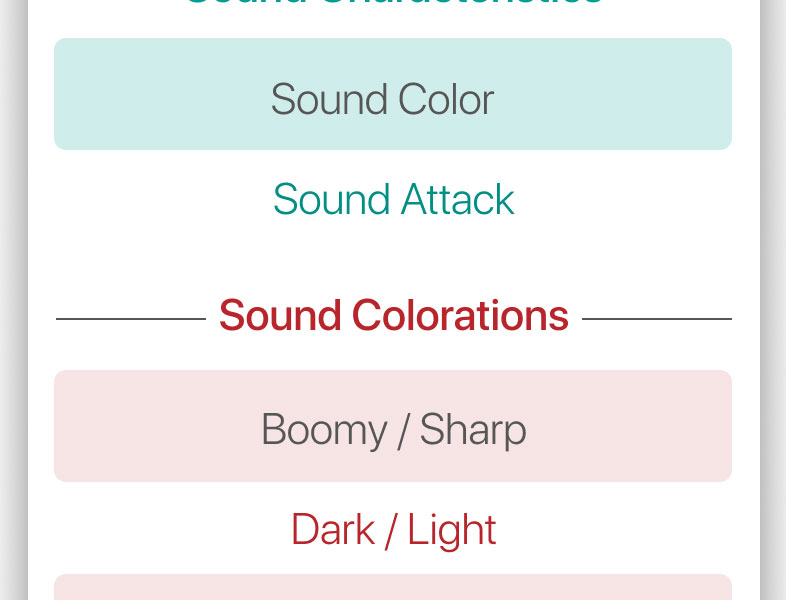
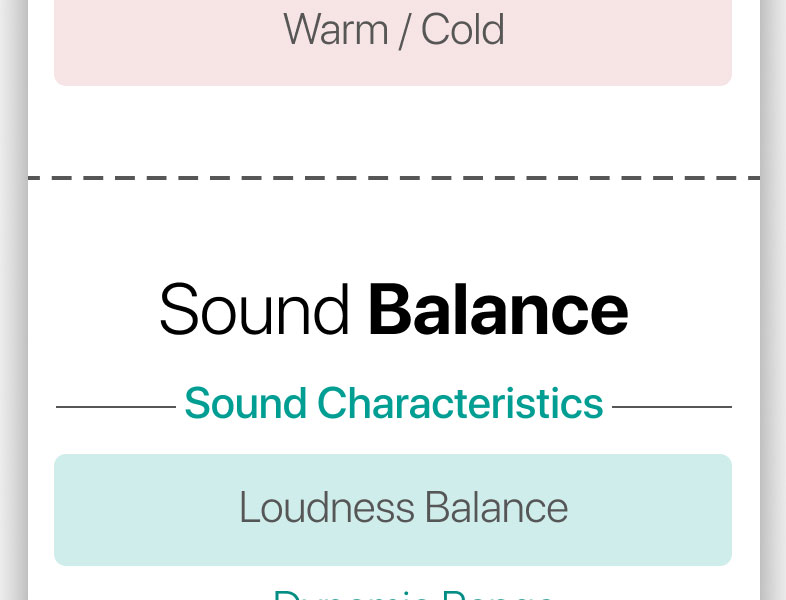
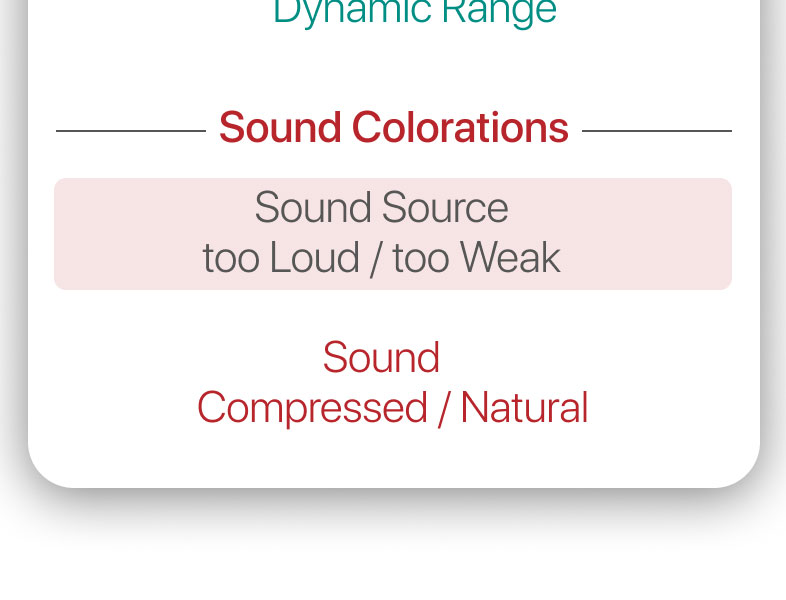


AC
Alternating current. Energy that changes potential at a fixed or regulated rate. Both the electricity in a home, and a musical signal going to a speaker are forms of alternating current.
Acoustics
A science dealing with the study of sound waves.
Active speaker
Loudspeaker system with built-in power amplifier and, in most cases, signal processing and/or equalization to optimize the interface between the speaker unit(s) and the electronics. An active speaker may be driven from almost any low level line output available on A/V and multimedia equipment plus personal stereo components, such as mp3, iPod and CD players.
Acoustic balance
The subjective impression of the relation between the direct and indirect (reflected) sounds. (ITU-R BS.1284-2 (01/2019))
Acoustic noise
Unwanted sounds in the room of origination, caused by, for example, air-conditioning equipment, lighting, movement of chairs; or noises carried by the structure of the building, such as impacts from outside, traffic noise, etc. (ITU-R BS.1284-2 (01/2019))
Amplifier
Electronic system used to boost, or increase signals to drive loudspeakers. It can be a single box or separated into two - pre-amp and power-amp.
Analog
Electrical signal analogous to the original sounds in non-digital (continuous time) form. For example, LPs and cassette tapes store audio in an analogue form.
Apparent room size
The subjective impression of the apparent size, real or artificial, of the origination room. (ITU-R BS.1284-2 (01/2019)).
Apparent Sound Source Size
The sense of size of the sound image in front of us, of which the position is determined by direct sound. The illusion that in our room, just before us, is a live orchestra. Sound Power Directivity Index Until November 2013 Sound Power Directivity Index (SPDI) was defined as the difference in level between the On-Axis curve and the Sound-Power curve, expressed in dB, (SPDI = Direct Sound - Sound Power). But as of November 2013, in ANSI/CEA-2034 Standard the SPDI is defined as the difference between the Listening Window curve and the Sound-Power curve, because in highly-directional systems (e.g., large panel and horn) the listening window curve can be significantly different from the on-axis curve. SPDI shows the uniformity of sound dispersion in space. An SPDI of 0 dB indicates omnidirectional radiation. The larger the SPDI, the more directional the loudspeaker in the direction of the reference axis. High directivity means narrow listening window, poor reflections and significant loss of aliveness and naturalness outside the narrow sweet spot. Conventional speakers have high directivity index, with losses between 5db at midrange and 10 db at high frequencies.
Apparent source width (ASW)
a measure of perceived source broadening and defined as the width of a sound image fused temporally and spatially with the direct sound image (Bradley et al., 2000). Before 1990, this is what the literature generally referred to as spatial impression (Barron, 2000). It is associated with the level of early (<80 ms) lateral reflections. It is also influenced by overall sound level. (ITU-R BS.1284-2 (01/2019))
Bi-wiring
Connection of a loudspeaker system to one amplifier via two, often different, speaker cables. A popular way to fine-tune the sound by exploiting the virtues of various cable designs. Requires loudspeakers with separate low and high range terminals and crossover sections.
Bit errors
Discrete noises or distortions originating in a digital system. (ITU-R BS.1284-2 (01/2019)).
Bass
The low frequencies, typically the frequencies below 250 Hz.
A. Sub-Bass: Center Frequency:31Hz, Frequency Range: 20-40Hz
Sound Characteristics: Weighty Sound felt more than heard.
Sound Colorations: Rumble
Examples of instruments sound: Kick Drum, Bass, Organ
B. Low-Bass: Center Frequency:63Hz, Frequency Range: 40-80Hz
Sound Characteristics: Depth, Thud, Bass Fullness
Sound Colorations: Boomy, lose definition.
Examples of instruments sound: Kick Drum, Bass, Piano
C. Mid-Bass: Center Frequency:125Hz, Frequency Range: 80-160Hz
Sound Characteristics: Fat, Body, Weight
Sound Colorations: Chesty, plummy, boomy, unclear
Examples of instruments sound: Punchy Bass, Vocals’ fullness, Toms Attack, Guitar & Snare Fullness, Warm Piano & Horns
D. Upper-Bass: Center Frequency:250Hz, Frequency Range: 160-320Hz
Sound Characteristics: Warmth
Sound Colorations: Boxy, hollow, muddy
Examples of instruments sound: Vocals, Electric Guitar, and Snare Fullness & Liveliness. Many acoustic instruments, Brass (e.g., alto saxophone), Woodwinds (e.g., clarinet), Violins, etc.
Bass Reflex
A vented loudspeaker enclosure in which the rear waves from the woofer(s) emerge through an opening or bass reflex port that is tuned to the woofer characteristics. A correctly designed bass reflex enclosure may feature higher efficiency and/or deeper bass than e.g. an acoustic suspension cabinet.
Bridging
Increasing power (up to four-fold, depending on the amplifier’s power supply capability) by connecting a stereo power amp for use in mono, then adding a second "bridged-stereo" amplifier for the other channel. Note that this can only be achieved with amplifiers that are designed for that purpose.
Center Speaker
A vital part of any Home Entertainment system, dedicated to the reproduction of the centre or dialogue channel in a Home Entertainment system. The centre channel should act as an acoustical extension of the TV or projection screen. This means that the centre speaker should be located on top of or below the screen, as close as possible to the picture.
Coloration
Subjective term describing the listening experience when the sound is not close to the original. Examples of coloration include warmness and harshness.
Compression
Compression is when the amplitude is "squashed" to reduce the level difference between the loud and soft parts of the music (the peaks and dips on the wave form). This is often used by radio stations to improve the sound of cheap radios with limited output capability when played loud. It is usually avoided in Hi-Fi, because it restricts dynamics. However, with powered subwoofers, a form of compression called soft clipping can be useful to avoid the harsh sound of transistors clipping when the amplifier is used near its limit. It’s similar to the way valves (tubes) limit their output.
Crossover
The brains of a speaker system, the crossover is a circuit that divides, shapes and allocates the high and low frequencies to different drivers. A crossover is used when a speaker system has more than one drive.
Crossover Frequency
The frequency at which equal power is delivered to each of the adjacent units in a multi-way speaker system. In a typical two-way system, the crossover frequency between the woofer and the tweeter will be set around 2.500 Hz.
DC
Direct Current. Power derived from a battery or rectified source where electrons flow only in one direction.
Decibel, dB
A logarithmic scale that measures changes in sound pressure or electrical power. A change of 1dB is just about audible, while +10dB sounds as though the original sound level has been doubled in volume. Doubling the power output of an amplifier gives an increase of 3dB.
Depth perspective
The subjective impression that the sound image has an appropriate front to back depth. (Listeners should be aware when assessing this subparameter that it may be an artefact of the listening conditions rather than a parameter of a two channel stereo recording.) (ITU-R BS.1284-2 (01/2019)).
Directional balance
The subjective impression that the sound sources within the sound image are placed in a way which makes the entire image balanced. (ITU-R BS.1284-2 (01/2019)).
Diffraction
The re-radiation of sound waves at discontinuities such as cabinet edges. The time-delayed wave interferes with the original sound output, causing peaks and dips in the frequency response.
Digital
Storing the sound as a stream of digits (0s and 1s). This method of storage is used by CD, DAT, DCC and mini-disc, for example.
Dipolar
In Home Entertainment, a dual surround speaker design consisting of two systems operating out of phase. Combined with an acoustic cancellation, this creates a diffuse sound field (ambient and spacious). Dipolar surround speakers are required by the Home THX specification.
Direct sound
The sound from the speakers which reaches directly from the speaker to the listener’s ears.
Dispersion
How widely and evenly a speaker spreads its sound. A speaker with narrow dispersion beams its sound forward like the beam from a flashlight. A wide-dispersion speaker evenly covers the entire listening area with sound.
Distortion
Unwanted signals or changes to the signal added by cheap or not well designed Hi-Fi or Home Cinema equipment.
Dynamic range
The subjective impression of the range between the strongest and weakest levels during reproduction, relative to the expectation of the listener for programme material of the type. (ITU-R BS.1284-2 (01/2019)).
Dolby Digital (AC3)
The classical surround sound technique from Dolby which uses 5.1 surround sound. The 5 main channels are left, centre, right, left surround and right surround. The .1 refers to a dedicated limited bandwidth low-frequency effects channel. Gives superior separation and sound quality compared to Pro-Logic.
Driver
Anything with a voice coil and a magnet - a woofer, midrange or tweeter. Another name for a speaker.
DTS, Digital Theater Systems
Digital Theatre Systems: Multi-channel digital surround system that encodes and decodes audio signals enhancing the fidelity of the signal to produce high quality sound. It is used in some movie theatres and is also available in some home theatre digital processors.
Dynamic Range
The difference between the loudest and softest sounds that can be reproduced by a device or format.
Electrical noise and distortions
Unwanted signal components caused by the electro-acoustic transmission channel or signal processing, such as: noise, clicks, nonlinear distortions and fading. (ITU-R BS.1284-2 (01/2019)).
Equalization
Deliberate electronic alteration of frequency response to produce a specific acoustic result. For example, powered subwoofers often use low-frequency equalization to produce strong bass response.
Frequency Response
Quoted in Hertz, it represents the range of frequencies, from bass through to treble, that the system is capable of reproducing in a linear manner, ie. without significant accentuation or attenuation. This response should be as flat and as extended as possible. The linearity is quoted within a certain amplitude limit, expressed in dB. A limit of +/-3dB is often used.
Early Reflections
The early reflections curve is an estimate of all single-bounce, first-reflections, in a typical listening room.
Vertical Reflections
The following two spatial averages are defined as Vertical reflections:
1. Floor reflection is the spatial average of the measurements at 30 degrees below the main-axis +/- 10 degrees.
2. Ceiling reflection is the spatial average of the measurements at 50 degrees above the main-axis +/-10 degrees.
Early Reflections Directivity index
ERDI is defined as the difference between the listening window curve and the early reflections curve. In small rooms, early reflections figure prominently in what is measured and heard in the room so this curve may provide insights into potential sound quality.
Freedom from noise and distortions
Absence of various disturbing phenomena such as electrical noise, acoustic noise, public noise, bit errors, distortions, etc. Examples of common descriptive terms: Perceptible/imperceptible disturbances. (ITU-R BS.1284-2 (01/2019))
Front Speaker
Main speaker in a Home Entertainment system.
Feeling of space
It is the feeling of being in a large space with live music. It is measured by the level difference of the Reflected Sound to the Direct Sound at the listening position. When the Reflected Sound is balanced at no lower level than the Direct Sound, we have the illusion of a bigger space of live music, instead of the sound coming out of the speaker box in front of us. The large value of the factor R indicates that a speaker is able to create the Feeling of Space. The R-factor is exactly opposite to the directivity index DI. R = Sound Power - Direct Sound. Spatial impression ("feeling of space") does indeed rank with sound quality (lack of "discoloration"), and, as Klippel finds, the two factors account for almost all of the important general subjective ratings of "naturalness" and "pleasantness." It seems relevant to note again that none of this is revealed in steady-state room curves, making such measurements poor metrics by which to judge the audible excellence of loudspeakers. (for more information, look at Klippel experiments).
Floyd Toole
Dr. Floyd Toole is a multi-awarded researcher on Acoustics and Psychoacoustics and a famous author about the scientific design and use of Loudspeakers and Rooms. He described that in short: using Science in the
service of Art. Dr. Toole has received many awards from the Audio Engineering Society, CEDIA, ALMA International, CTA, and IOA(UK). He has also served as a past president of the AES ( Audio Engineering Association). His book, Sound
Reproduction: The Acoustics and Psychoacoustics of Loudspeakers and Rooms, is an absolute reference to understand the science in Audio, Acoustics, and psychoacoustics of Loudspeakers, Rooms, and their combined effects on what
listeners hear.Link
Floyd Toole, Sound Reproduction: The Acoustics and Psychoacoustics of Loudspeakers and Rooms, Third Edition explains the physical and perceptual processes involved in sound reproduction and demonstrates how to use the processes to
create high-quality listening experiences in stereo and multichannel formats.
Understanding the principles of sound production is necessary to achieve the goals of sound reproduction in spaces ranging from recording control rooms and home listening rooms to large cinemas. This revision brings new science-based
perspectives on the performance of loudspeakers, room acoustics, measurements, and equalization. They all need to be appropriately used to ensure the accurate delivery of music and movie soundtracks from creators to listeners. Link
Home Cinema / Home Theater
Terms used to describe audio-video systems which permit home based reproduction of movies and multi-channel movie soundtracks. A specialized signal processor (Dolby Surround, Dolby Pro-Logic, AC3, THX) is used to decode the signal and distribute it to the various loudspeakers.
Homogeneity of the spatial sound
TThe subjective impression that the sound space is a homogeneous whole. (ITU-R BS.1284-2 (01/2019)).
Imaging
Refers to the focus of the positional cues and accuracy of said position of instruments and performers. Imaging is on a scale of good to bad, whereas Soundstage is wide to narrow.
Horizontal Reflections
The following three spatial averages are defined as Horizontal reflections:
1. Front is the average of the measurements at 0 degrees +/- 30 degrees.
2. Side is the average of the measurements at 60 degrees +/- 20 degrees to either side.
3. Rear is the average of the measurements at 180 degrees off the main-axis +/- 90 degrees (i.e.: the horizontal part of the rear hemisphere).
Imaging
Refers to the focus of the positional cues and accuracy of said position of instruments and performers. Imaging is on a scale of good to bad, whereas Soundstage is wide to narrow.
Impendance
Impedance is to AC signals what resistance is for DC signals. Measured in Ohms, it may vary according to frequency. A low impedance device (under 4 ohms) will draw more current from an amplifier.
Integrity
The subjective impression of an appropriate sound image for the performance so that the two appear as an integrated whole. (ITU-R BS.1284-2 (01/2019))
Intelligibility
The possibility to distinguish the words in spoken and sung text. (ITU-R BS.1284-2 (01/2019)).
ITU-R BS.1284 -2 (2019)
General methods for the subjective assessment of sound quality. This Recommendation describes general methods of subjective evaluation for sound quality with or without a reference signal. Keywords: Subjective assessment, audio quality, stereophonic image quality, front image quality, timbral quality, sound colour, sound homogeneity, localization quality, environment quality https://www.itu.int/rec/R-REC-BS.1284/en.
ITU-R BS
Recommendations (Direct Download) for Broadcasting Sound https://www.itu.int/rec/R-REC-BS.
ITU, International Telecommunication Union
The International Telecommunication Union is a specialized agency of the United Nations responsible for all matters related to information and communication technologies. Established in 1865 as the International Telegraph Union, it is one of the oldest international organizations in operation. The ITU's most significant role is to regulate and set standards for global telecommunication. https://www.itu.int/
Kevlar
Incredibly tough woven material developed by DuPont. The woven fabric is also used to provide strength in bulletproof vests and sailboards. Properties of lightness, stiffness and asymmetry are ideal for wide-range loudspeaker cones. (Kevlar® is a registered trademark of DuPont)
Klippel, Wolfgang
Prof. Dr. Ing. habil. Wolfgang Klippel is Honorary Professor for Electro-Acoustics at the Institute of Acoustics and Speech Communication giving lectures in "Active Control of Sound and Vibration" and "Sound Quality of Audio Systems".
KLIPPEL, company
Klippel is an innovative leader in providing unique test equipment for electro-acoustical transducers and audio systems. The KLIPPEL Analyzer System empowers engineers worldwide to create, evaluate, and test audio products over the full life cycle in the lab, on the production line, and in the field. Based on a common hard- and software platform, these tools allow products to be created that exceed the end-user's expectations while minimizing manufacturing costs. KLIPPEL's vast research on acoustics, loudspeaker modeling, and system identification is the basis for unique measurement and simulation tools as well as innovative DSP algorithms. http://www.klippel.de/.
KLIPPEL EXPERIMENTS
Klippel, W. (1990a). "Multidimensional Relationship between Subjective Listening Impression and Objective Loudspeaker Parameters," Acustica, 70, pp. 45-54.
1990b). "Assessing the Subjectively Perceived Loudspeaker Quality on the Basis of Objective Parameters," 88th Convention, Audio Eng. Soc., Preprint 2929.
The following points are from the recommended reference book of Floyd Toole, Sound Reproduction: The Acoustics and Psychoacoustics of Loudspeakers and Rooms
… Of special interest was his finding that what he called "feeling of space" figured prominently in listener responses.
…When Klippel analyzed the factors that contributed to the perception of "naturalness," one of the general measures of quality, he found the following:
■ 30% was related to inappropriate discoloration (sound quality).
■ 20%
was related to inappropriate brightness (which is explained as a 70% excess of treble and 30% lack of low frequencies).
■ 50% was associated with the "feeling of space."
…For the second general measure of quality, "pleasantness," the factor weighting was the following:
■ 30% was related to inappropriate discoloration (sound quality).
■ 70% was associated with the "feeling of space." Thus,
sensations of sound quality and spaciousness dominated both "naturalness" and "pleasantness" in ratings of these loudspeakers and, of these, "feeling of space" held a slight lead.
Klippel chose as his objective measure of "feeling of space" (R) the difference between the sound levels of the multidirectional reflected sounds and the direct sound at the listening location: R = Ldiffuse - Ldirect
…Thus, the difference between the anechoic on-axis frequency response (Ldirect) and total sound power (Ldiffuse), representing the late reflected sound field at the listening location, provides a measure of the potential a
loudspeaker has for generating perceptions of "feeling of space."
…there is an optimum amount of reflected sound; there can be too much and too little, depending on the nature of the program. The smallest amount is required to provide a satisfying setting for speech, and more is required for
music.
…There is a parallel with data shown in Figures 7.2 and 7.3 that indicated that listeners preferred listening to speech and music with individual reflections at levels above those of natural room reflections.
A good loudspeaker for this purpose would therefore be one that has two qualities: wide dispersion, thereby promoting higher levels of reflected sound, and a relatively constant directivity index so that the direct-sound and
reflected-sound sound curves have similar shape.
An associated requirement of considerable importance is that at least some of the off-axis sounds be allowed to reflect, and any that are acoustically modified by absorption or diffusion are treated in a spectrally neutral manner. In
other words, any reflected or scattered sounds should convey the spectral Balance of the incident sounds, only at a lower sound level.
Spatial impression ("feeling of space") does indeed rank with sound quality (lack of "discoloration"), and, as Klippel finds, the two factors account for almost all of the important general subjective ratings of "naturalness" and
"pleasantness." ness."
(Floyd Toole, Sound Reproduction: The Acoustics and Psychoacoustics of Loudspeakers and Rooms)
.
Listener envelopment (LEV)
a sense of being surrounded by a diffuse array of sound images, that are not associated with particular source locations. It is associated with reflections arriving after about 80 ms. (ITU-R BS.1284-2 (01/2019)).
Listening Window
The listening window is a spatial average of the amplitude responses in the ±10º vertical and ±30º horizontal angular range. This encompasses those listeners who sit within a typical home theater audience, as well as those who disregard the normal rules when listening alone.
Location accuracy
The subjective impression that all sound sources are accurately positioned in the sound image. (ITU-R BS.1284-2 (01/2019)).
Loudness balance
The subjective impression of the appropriate relative strength of the various sound sources. (ITU-R BS.1284-2 (01/2019)).
Main impression
A subjective weighted average of the previous six attributes, taking into account the integrity of the total sound image and the interaction between the various parameters. (ITU-R BS.1284-2 (01/2019)).
Midrange
1. Speaker driver assembly that produces sound frequencies in the middle of the whole audio band.
2. The midrange frequencies, typically the frequencies between 250Hz-4kHz.
A. Low-Mid: Center Frequency:500Hz, Frequency Range: 320-640Hz
Sound Characteristics: Projection, Presence
Sound Colorations: Tubelike, tunelly, honky
Examples of instruments sound: Texture balance, Horn effect on Vocals, Bassline Attack & Clarity
B. Mid-Midrange: Center Frequency:1kHz, Frequency Range: 640Hz-1.25kHz
Sound Characteristics: Focused & Loud Projection, Whack, Attack
Sound Colorations: Cuplike, honky, nasal
Examples of instruments sound: Attack on snare drum, guitar and percussion, "phone effect" on vocals
C. Upper- Mid: Center Frequency:2kHz, Frequency Range: 1.25-2.5kHz
Sound Characteristics: Crunch, Crispy, Musical, Natural, Intense of Sound
Sound Colorations: Nasal, hard, gritty
Examples of instruments sound: Vocals Articulation, Guitars’ liveliness
Octave
A musical term that refers to the complete range of tones in the musical scale. (Do, re, mi, etc…). In audio terms, an octave is a halving or doubling in frequency (Hz). For example, middle C on the piano keyboard is 256Hz. The C an octave higher would be 512Hz. The human ear can hear approximately ten octaves, from 20-20,000Hz.
Ohm
Unit of electrical impedance or resistance to current. With lower impedance speakers, more sound pressure will be obtained from a given amplifier, but at the expense of drawing more current and producing more heat at the amplifier’s output stage circuit.
On Axis response
The measurement of a speaker’s Direct Sound, just in front of the speaker’s radiation axis, in an anechoic chamber. This is the most common measurement of speaker frequency response. It represents how the speaker sounds when we are just in front of and close to it, so that the direct sound is stronger than the reflections.
Naturalness
hen Klippel analyzed the factors that contributed to the perception of "naturalness," one of the general measures of quality, he found the following:
■ 30% was related to inappropriate discoloration (sound
quality).
■ 20% was related to inappropriate brightness (which is explained as a 70% excess of treble and 30% lack of low frequencies).
■ 50% was associated with the "feeling of space." (ITU-R BS.1284-2 (01/2019)).
Pleasantness
For the second general measure of quality, "pleasantness," the factor weighting was the following:
■ 30% was related to inappropriate discoloration (sound quality).
■ 70% was associated with the "feeling
of space." Thus, sensations of sound quality and spaciousness dominated both "naturalness" and "pleasantness" in ratings of these loudspeakers and, of these, "feeling of space" held a slight lead. (for more information, look at
Klippel experiments).
Positioning/ Placement of the Speakers/Listener
Each one of them individually, and their combination, affect the Size of the Soundstage and the Focus of the Sound Image. With typical Front-firing or Dipole speakers, the Position /Placement affects the size of the Soundstage and the Focus of the Imaging more than the Equipment and the Acoustics of the Listening Room.
Public noise
The subjective impression of disturbances caused by the audience. (ITU-R BS.1284-2 (01/2019)).
Reverberance
The subjective impression of the appropriate duration of natural or artificial indirect sounds. (ITU-R BS.1284-2 (01/2019)).
Reflected sound
The sound that reaches the listener’s ears, after being reflected on various surfaces (walls, ceiling, floor, etc.).
Reflections reach our ears later than direct sound and thus give us the pleasurable sense of space dimensions. When reflections are balanced at no lower level than direct sound, they give a larger sense of space and music sounds more alive, natural and pleasant in your room.
Conventional speakers due to high directivity do not emit smooth sound to all directions and so the reflections reaching our ears do not sound like the direct sound. Because of their directivity, conventional speakers are seriously disadvantaged outside the narrow sweet spot right in front of the speakers.
Sound attack
The individual sound sources appear to be properly balanced in the general sound image. Sub-attributes: Loudness balance, Dynamic range Examples of common descriptive terms: Sound source too loud/ too weak, Sound compressed/natural. (ITU-R BS.1284-2 (01/2019)).
Sound balance
The subjective impression of the speed at which sounds begin; a combination of the rate at which sounds increase over a very short period and the duration of that period. (ITU-R BS.1284-2 (01/2019)).
Sound attack
The subjective impression of the speed at which sounds begin; a combination of the rate at which sounds increase over a very short period and the duration of that period. (ITU-R BS.1284-2 (01/2019)).
Sound colour
The subjective impression of an appropriate sound for each source including all its characteristic harmonic elements. (ITU-R BS.1284-2 (01/2019)).
Sound colour of reverberation
The subjective impression of a natural sound colour in the acoustics of the venue including any artificial reverberation. (ITU-R BS.1284-2 (01/2019)).
Sound Image
3-Directional Balance, Soundstage Width, Depth, Height & Focus. The sound image appears to have the correct and appropriate direction distribution of sound sources. Sub-attributes: Directional balance, Stability, Sound image width, Location accuracy. Examples of common descriptive terms: Wide/narrow, Precise/imprecise.
Sound image width
The subjective impression of an appropriate width of the sound stage in the stereo sound field. (ITU-R BS.1284-2 (01/2019)).
Sound Power response
The average of all the frequency response measurements, spherical in all directions around the speaker. It shows the total radiated acoustic energy at all frequencies around the speaker. Smooth Sound Power similar to Direct Sound is essential for natural and pleasant sound reflections from the walls. Thus it is necessary for rich feeling of space.Sound power represents all of the sounds arriving at the listening position after any number of reflections from any direction.
Sound Reproduction: The Acoustics and Psychoacoustics of Loudspeakers and Rooms
Floyd Toole, a leading expert in the field of sound reproduction, explains how to design the best possible listening experience for recording control rooms and home entertainment systems. This comprehensive work considers the whole sound reproduction chain from multi-channel audio configurations and the loudspeaker/room system to acoustics and psychoacoustics and the evaluation process. (Floyd Toole. Sound Reproduction: The Acoustics and Psychoacoustics of Loudspeakers and Rooms).
Focus
Refers to the positional cues and accuracy of said position of instruments and performers in the Sound Image. Focus is evaluated on a scale of good to bad, whereas Soundstage from wide to narrow..
Sound source definition
The subjective impression that different instruments or voices sounding simultaneously can be identified and distinguished. (ITU-R BS.1284-2 (01/2019)).
Soundstage
the sense of space in front of you. Soundstage extends between and beyond your speakers, where the sound seems to come from. Soundstage refers to the width, depth, and height of the projected stereo image. Imaging is the accurate focus of the instruments in the Soundstage. With proper speakers and placement, it's like the performers are in the room with you. Some speakers image well but have a narrow soundstage to reduce room interaction. Lots of studio monitors and smaller speakers (bookshelf format) take this approach. Other speakers have incredibly large/wide/tall/deep soundstages but diffused imaging because they lack the front-firing drivers with accurate and stable focus. Imagine yourself in a small theater, watching an orchestra perform on stage. Now close your eyes and listen. Can you still "see" the orchestra? Sound Image is an imaginary three-dimensional space created by the high-fidelity reproduction of sound in a stereo speaker system. The Imaging or Focus of the Sound Image, allows the listener to hear the location of the instruments in front of her..
Soundstage and Imaging of Headphones
Headphones offer a different Soundstage and Imaging than the speakers. However, you can still locate the instruments in a given space around your head. You can also perceive the size and dimension of the given space.
Spaciousness
the 3-Dimensional feeling of space. The performance appears to take place in an appropriate spatial environment. e.g., Room reverberate /dry, Direct/indirect, Large room/small room. There are two separable components to the perception of what is broadly called spaciousness: Apparent Source Width (ASW) and Listener Envelopment (LEV). (Floyd Toole. Sound Reproduction: The Acoustics and Psychoacoustics of Loudspeakers and Rooms).
Spatial impression
The subjective impression that the performance takes place in an appropriate spatial environment. Sub-attributes: Homogeneity of spatial sound, Reverberance, Acoustic balance, Apparent room size, Depth perspective, Sound colour of reverberation. Examples of common descriptive terms: Room reverberate/dry, Direct/indirect, Large room/small room. (ITU-R BS.1284-2 (01/2019)).
Stability
The subjective impression that all sound sources stay in their intended positions. (ITU-R BS.1284-2 (01/2019))).
Stereo impression
The subjective impression that the sound image has the correct and appropriate directional distribution of sound sources. Sub-attributes: Directional balance, Stability, Sound image width, Location accuracy Examples of common descriptive terms: Wide/narrow, Precise/imprecise. (ITU-R BS.1284-2 (01/2019)) Sweet spot: The size of the Soundstage and the Focus of the Sound Image depend on the Positioning of the speakers in the Room and the Placement of the Listening chair. To attain a really convincing 3D Soundstage and tightly Focused Images requires both very good components assembled into a very complementary system combined with a great room where the speakers and the listening position have been well placed.
Sweet spot
Sweet spot is the narrow region in which we must be sited during audio playback to have the best sound quality. According to the international standard ITU-R, in stereo, the sweet spot is the vertex of an equilateral triangle with the other two vertexes being the right and left speaker. The size of the Soundstage and the Focus of the Sound Image depend on the Positioning of the speakers in the Room and the Placement of the Listening chair. To attain a really convincing 3D Soundstage and tightly Focused Images requires both very good components assembled into a very complementary system combined with a great room where the speakers and the listening position have been well placed..
Sensitivity
How loud a speaker can play with a specific amount of power input measured by a microphone placed at a specific distance. Typically, 2.83 volts at 1 meter, on axis.
Subwoofer
A system designed to produce only bass frequencies. It can be an active or passive system.
Surround Sound Speakers
Specialized speaker for the reproduction of special effects and ambient information contained in a multi-channel Home Theater system. Usually available as surround speakers to be placed at the rear or dipoles to provide a diffuse soundfield from the sides.
Time definition
The subjective impression that individual short sounds in rapid succession can be identified and differentiated. (ITU-R BS.1284-2 (01/2019)).
Timbre
The subjective impression of the accurate portrayal of the different sound characteristics of the sound source(s). Sub-attributes: Sound colour, Sound attack. Examples of common descriptive terms: Boomy/sharp, Dark/light, Warm/cold. (ITU-R BS.1284-2 (01/2019)).
Transparency
The subjective impression that all details of the performance can be clearly perceived. Sub-attributes: Sound source definition, Time definition, Intelligibility. Examples of common descriptive terms: Clear/muddy. (ITU-R BS.1284-2 (01/2019)).
THX
THX, developed by the famous director George Lucas, is the founder of many patented High-Quality Audio and Video technologies. THX has developed a set of standards for audio and video equipment and is certifying products that meet these strict requirements.
The THX certification offers:
-
the only internationally acceptable insurance of High Quality, granted to products after very strict tests
-
the unique guarantee for top quality Home Theatre and Music reproduction
-
THX Certified products:
-
are the best products of the leader Home Theatre manufacturers
-
always receive the best reviews in Audio & Video magazines worldwide
Treble
The high frequencies, typically the frequencies above 4kHz.
A. Low Treble: Center Frequency:4kHz, Frequency Range: 2.5-5kHz
Sound Characteristics: Clarity, Presence, Edge, Detail
Sound Colorations: Upper hardness, wiry, harshness
Examples of instruments sound: Vocals Clarity, and Detail, Toms Attack, Snare Crispness, Violin & Piccolo Harmonics, Clarity of any instrument taking a solo.
B. Mid-Treble: Center Frequency:8kHz, Frequency Range: 5-10kHz
Sound Characteristics: Crystal, Metallic, Sizzle, Brightness, Brilliance, Detail, Air
Sound Colorations: Sharp, metallic, sibilant
Examples of instruments sound: Cymbals, Synths, Metallic Percussion, Steel string instruments, Snare crispness, Electric guitar air/sizzle
C. Upper-Treble: Center Frequency:16kHz, Frequency Range: 10-20kHz
Sound Characteristics: Air, Openness, Light, Crispy, Delicate
Sound Colorations: Fizzy, gritty, hiss
Examples of instruments sound: Hi-hat & Cymbals, Adds ambience to all sounds.
Watt
1. Unit of power. More watts mean more power, but how loud a system sounds also depends on speaker sensitivity and room size.
2. The basic measuring unit for electrical or acoustical power.
Woofer
The large drive unit in a speaker that produces bass frequencies.
3-Directional speakers
they are speakers with WiSound technology. They use at least Three WiSound Full-Range Tweeters/Channel and optimized WiSound DSP. The 3D speakers with their Balanced 3-Directional drivers simulate the sound of the expensive Omnidirectional speakers. They spread the Acoustic energy equally on-axis and off-axis, Horizontally and Vertically. The 3-Directional sound radiation offers a "stereo everywhere" effect that's good around any room for non-critical off-axis listening. However, they can still reproduce a stable and focused stereo image in the sweet spot.


